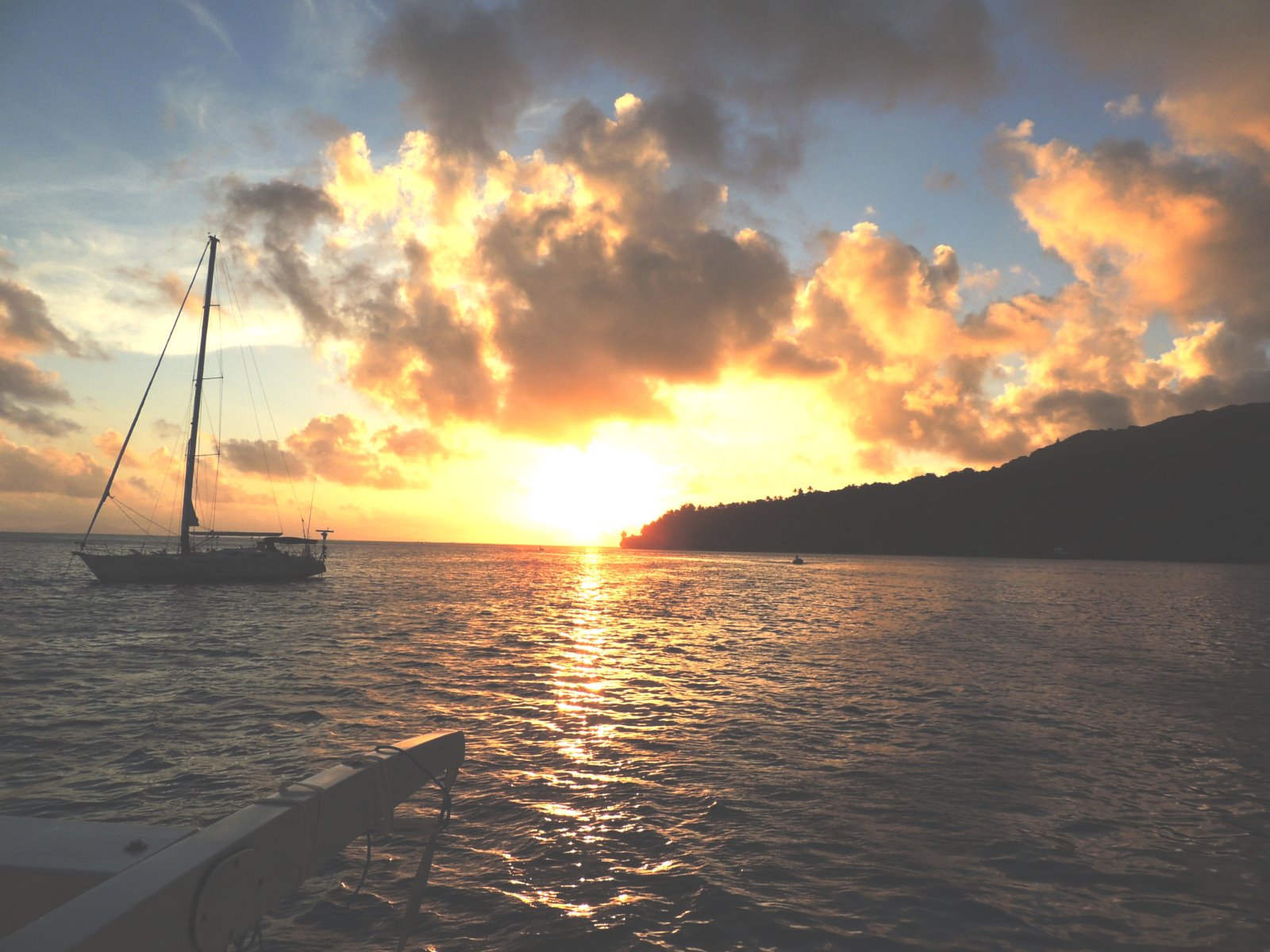
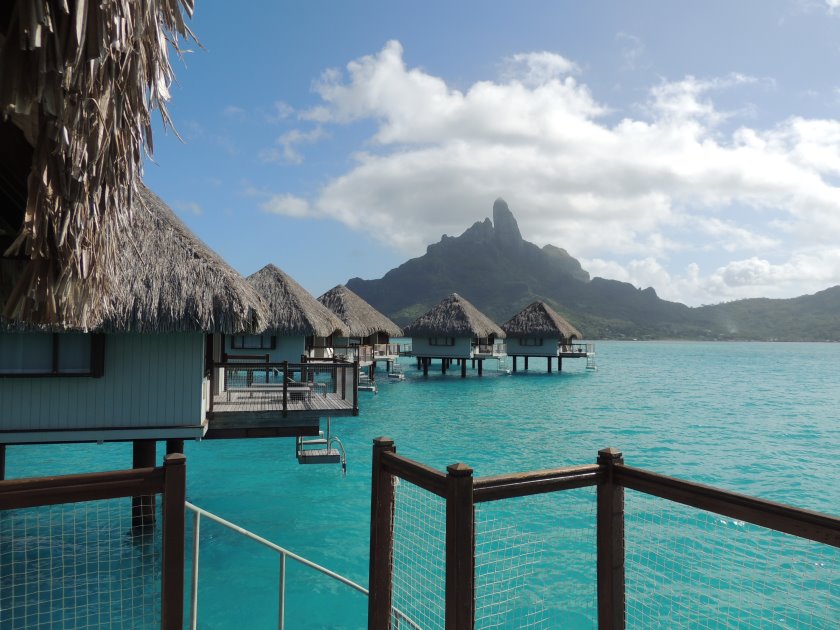
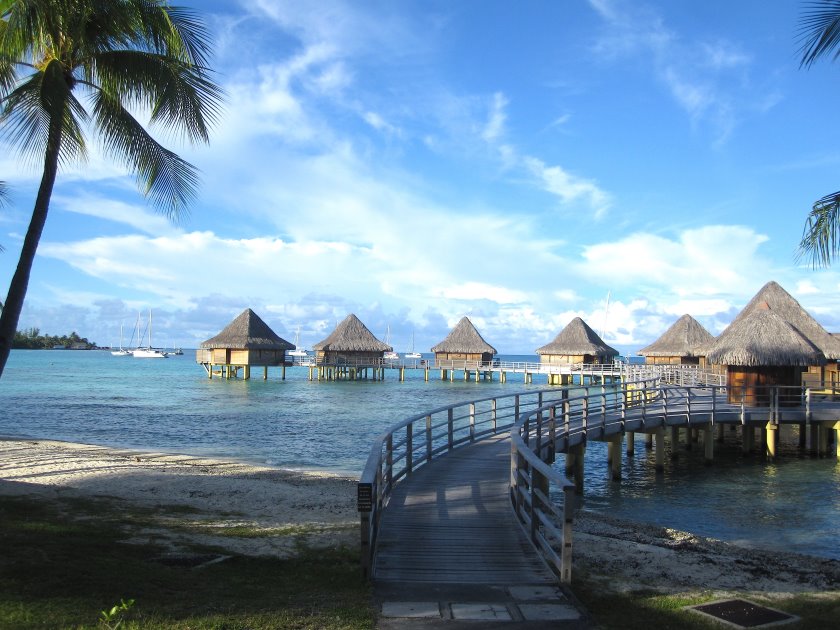
Paradise On the Pacific Ocean, or checking out the bungalows at le Méridien or Kia Ora Resort, Tahiti surprises
Elyse Glickman is US west coast editor of Lucire.
From Bora Bora’s posh, polished pearl boutiques to Tahiti’s urban beach scene to the rough-hewn elegance of resorts on her other islands, there’s something for every taste
by Elyse Glickman
photographed by the author
see also issue 30 of Lucire for Amber Peebles’ Tahitian experience
If there’s one word that encapsulates French Polynesia, it is romance, and in a context more encompassing than our familiar concept of the word. For example, the way indigenous cultures coexisted harmoniously with nature stirred the soul of impressionist painter Paul Gauguin in the late 19th century. Marlon Brando’s immersion into the culture and its history during the making of 1962’s Mutiny on the Bounty profoundly impacted his professional and personal passions. The region’s history, from French colonization to its role in World War II’s Pacific battles, stirs passionate conversation to this day.
Though generations of adventurous travellers have fantasized about an exotic trek to Tahiti, and there are many wonderful resorts in which to escape (including the Inter-continental Tahiti Resort & Spa), this island’s definition of paradise has shifted. The capital Papeete (in a similar manner to Honolulu, Hawai‘i) is an urban experience, encompassing food treks, museums, city festivals and shopping. Above all, Papeete is the perfect spot to get acquainted with everyday French Polynesian life before heading to the other islands.
Forgetting a couple of things at home presents a good excuse to take a quick taxi ride to the Tahiti outpost of French mega-retailer Carrefour, which is also a lovely, local way to begin the day. The megastore anchors Centre Moana Nui, and is flanked by cafés and stands that provide sweet aromas and nice glimpses of locals taking breaks between errands. It is a prime place not only for picnic and hiking provisions but also souvenir shopping with its interesting mix of reasonably priced French- and island-made food products and affordable resort-perfect clothing and accessories.
Papeete’s principal shopping destination is le Marché, which although arguably touristique, attracts local shoppers as well as visitors with its gorgeous produce stands, aromatic flower bouquet, fish and meat shops, vanilla vendors, and sandwich stands lining the perimeter of the first level. In and around the open-air building, one can find all kinds of wonderful home entertaining-focused souvenirs, from hand-printed tablecloths, napkins and place mats to wooden serving pieces. If your luggage accommodates it, there are also chic fabric and palm frond shopping totes in a variety of sizes that make stylish picnic baskets or storage bins.
While most of the second floor of le Marché is devoted to pearl and shell jewellery at varying levels of quality, a corner of it is dedicated to Café Maeva. This cute spot serves a variety of casual Tahiti classics, including poisson cru (a raw ahi tuna salad with coconut and lime) as well as “Chinese” and “Greek” versions of the recipe. Their “Mexican curry” shrimp with haricots verts (string beans) is delicious, though it reads more like a Thai or Indian dish. Other popular choices include overflowing plates of breadfruit and taro fries, as well as local beer Hinano, best served ice-cold.
If your arrival day or night before your departure falls on a weekend, cab it to the cruise ship docks for a stroll around its fabled roulottes (food trucks), proffering everything from traditional French crèpes and steak-frites to many different variations of poisson cru and ahi sashimi to fresh-grilled local catches to chow mein and Mongolian beef.
continued below

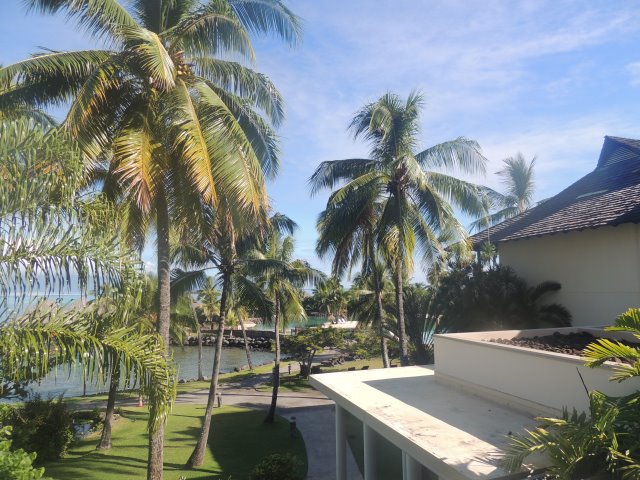
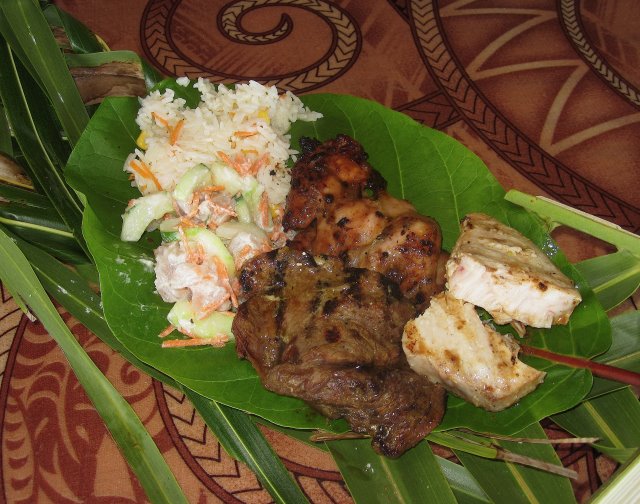
Top Breadfruit abounds in Tahiti. Centre Another picturesque resort view. Above Our favourite motu.
Get your motu running: islands less travelled
Two of the region’s less well-known islands, including Huahine and Rangiroa, are best navigated with jeep and boat tour companies operated by astute guides who bring spirit and soul to their life’s work. The highlight of snorkel and dive trips is a barbecue picnic on a motu, or mini-island. Once docked, guides serve up a mix of live music, cooking and craft demonstrations and optional extra time to hike, dive and explore. When picking both tours and resorts, it’s best to seek out those one that balances out comfort, luxury, and authenticity.
A striking example of this is Relais Mahana, located in the heart of Huahine. Designed as a haven for divers and sailors, the simple but adorably landscaped property includes such options as a ‘Surf & Turf’ stay where you can stay in a quaint bungalow for part of the trip and sleep in style on a gorgeously appointed catamaran for the other part. For guests bringing their own boat, the Relais offers another programme where guests can drop anchor in their bay and have access to their restaurant, wifi and the divine hospitality of the owners. While the Relais Mahana offers a lovely dinner menu, there’s something magic about watching a sunset as ceviche, sesame-crusted ahi tuna and dark chocolate soufflé dusted with coconut are served with a fine French white Bordeaux.
Daytime activities and tours, by nature, are also very “surf and turf”. In the morning, group tours with Poé (owner of www.poeislandtour.com) include scenic drives through tiny towns, visits to marae (architectural sites) and glimpses of local children catching eels. The highlight is a visit to a vanilla collective where you not only get the run-down of what distinguishes Tahitian vanilla from other varieties, but also sample it made into a creamy coffee, ice cream and a couple of different pastries. The air is thick with the smell of tiare, jasmine and other indigenous flowers. Frequent interactions with friendly Polynesian and European-French locals punctuate the guide’s narrative.
While this lives up to expectation of what you would want in a Pacific island paradise, Poe intersperses witty repartee and historic facts about Huahine. One of her most poignant comments is about the island’s omnipresent hibiscus. At dawn, the flowering part of the plant opens out into a sunny yellow. At noon, the flower is orange, and then transitions to bright pink by mid-afternoon. By sunset, it becomes a deeper purple before succumbing to local breezes to allow another bloom to take its place. It is the same flower, but with a different personality based on where it is in a given moment.
After a visit to a pearl farm (which offers temptations of the fashionable sort), Poe turns her guests over to her father, who squires them on his boat to an afternoon of snorkelling and motu-ing. This one offers the opportunity to participate hands-on in the crafting of the poisson cru. The result is light, citrusy and heavy on the cucumbers. There is another catch—you eat your lunch on picnic tables waist-deep in water at the beach as frisky shallow water fish circle our legs.
While it takes effort to get to Rangiroa, a two-hour flight from Papeete, anybody looking to truly “get away from it all” will be richly rewarded. The jewel of the island is the Hotel Kia Ora Resort & Spa, not only for its gorgeous landscaping, superb food and access to great dive and snorkel outings and sport fishing, but also sexy contemporary décor in all of its 60 over-water, beach and land lodgings. Each unit makes use of the surrounding foliage and waterfront.
It also doesn’t hurt that this resort-spa (a favourite of the late director Tony Scott) was recently renovated with refreshing, green-hued and contemporary décor in its lodgings. Each unit makes use of the surrounding foliage and waterfront, yet is private, secluded and tailor-made for intimate romantic nights.
Manager (and Vancouver, British Columbia native) Gerard Garcia presides over the property with a lot of verve and enthusiasm, especially when it comes to the sport-fishing opportunities and the cuisine. The waters surrounding Kia Ora’s main resort and the more exclusive Kia Ora Private Island are rich in mahi mahi, blue marlin, sailfish, tuna and wahoo. As the sun sets on another perfect day, island-inspired pupu (appetizers) of Tabasco-seasoned grilled coconut and garlic-y olives are brought out. As Garcia makes recommendations from the resort’s impressive cocktail list, he inserts guests can’t leave the resort without trying a dollop of the chef’s house-made coconut preserves on piping hot croissants.

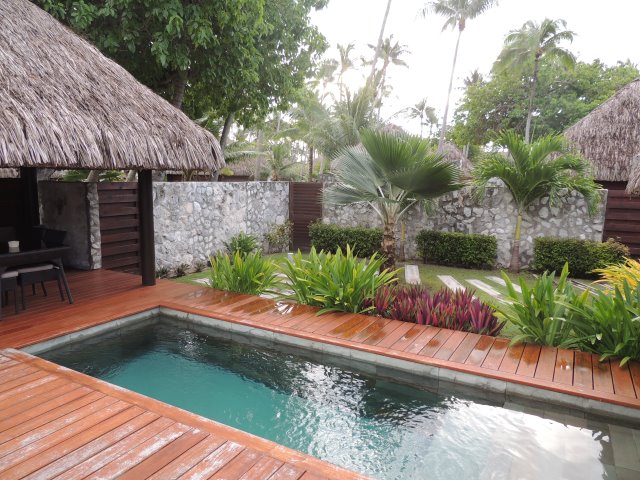
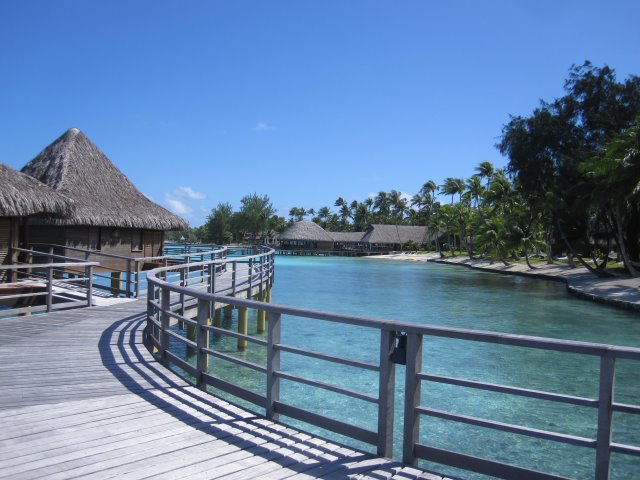
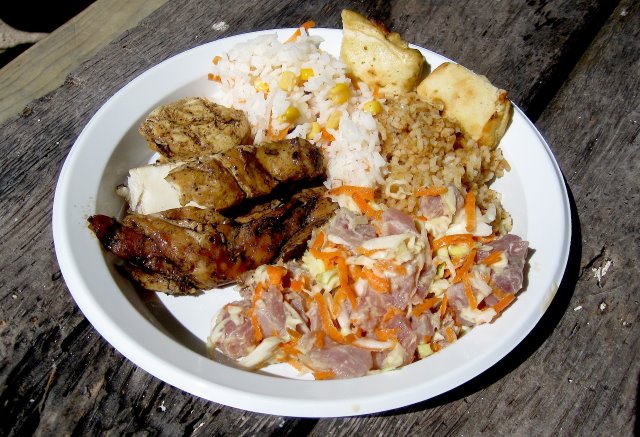
Above, from top Vanilla fish at the Kia Ora Resort. A private pool at the Kia Ora Resort. The path back to the bungalows. Rangiora motu.
Related articles hand-picked by our editors
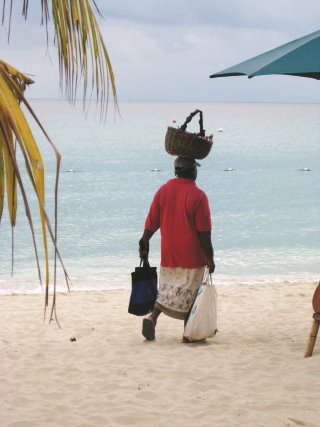 Simply irie-sistible
Simply irie-sistible
Forget the package deal and go à la carte! Jamaica boasts a treasure trove of unique lodging options, fresh island fare and unexpected cultural surprises
by Elyse Glickman
from issue 28 of Lucire
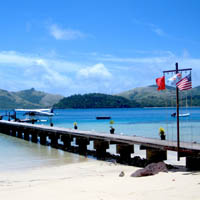 Fiji: just like the movies, only better
Fiji: just like the movies, only better
The multicultural archipelago nation, incorporating the real-life Blue Lagoon, is as surprising as it is romantic by Elyse Glickman
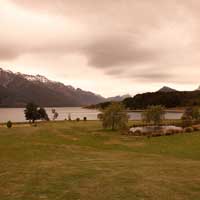 Splendid isolation
Splendid isolation
Blanket Bay in the Otago region
is rumoured to be a celebrity getaway. Jack
Yan sees a five-star boutique resort
photographed by Douglas
Rimington
From issue 16 of Lucire
Advertisement
Copyright ©1997–2022 by JY&A Media, part of Jack Yan & Associates. All rights reserved. JY&A terms and conditions and privacy policy apply to viewing this site. All prices in US dollars except where indicated. Contact us here.